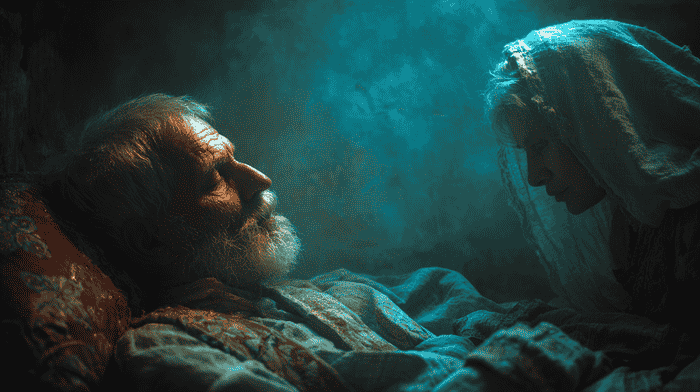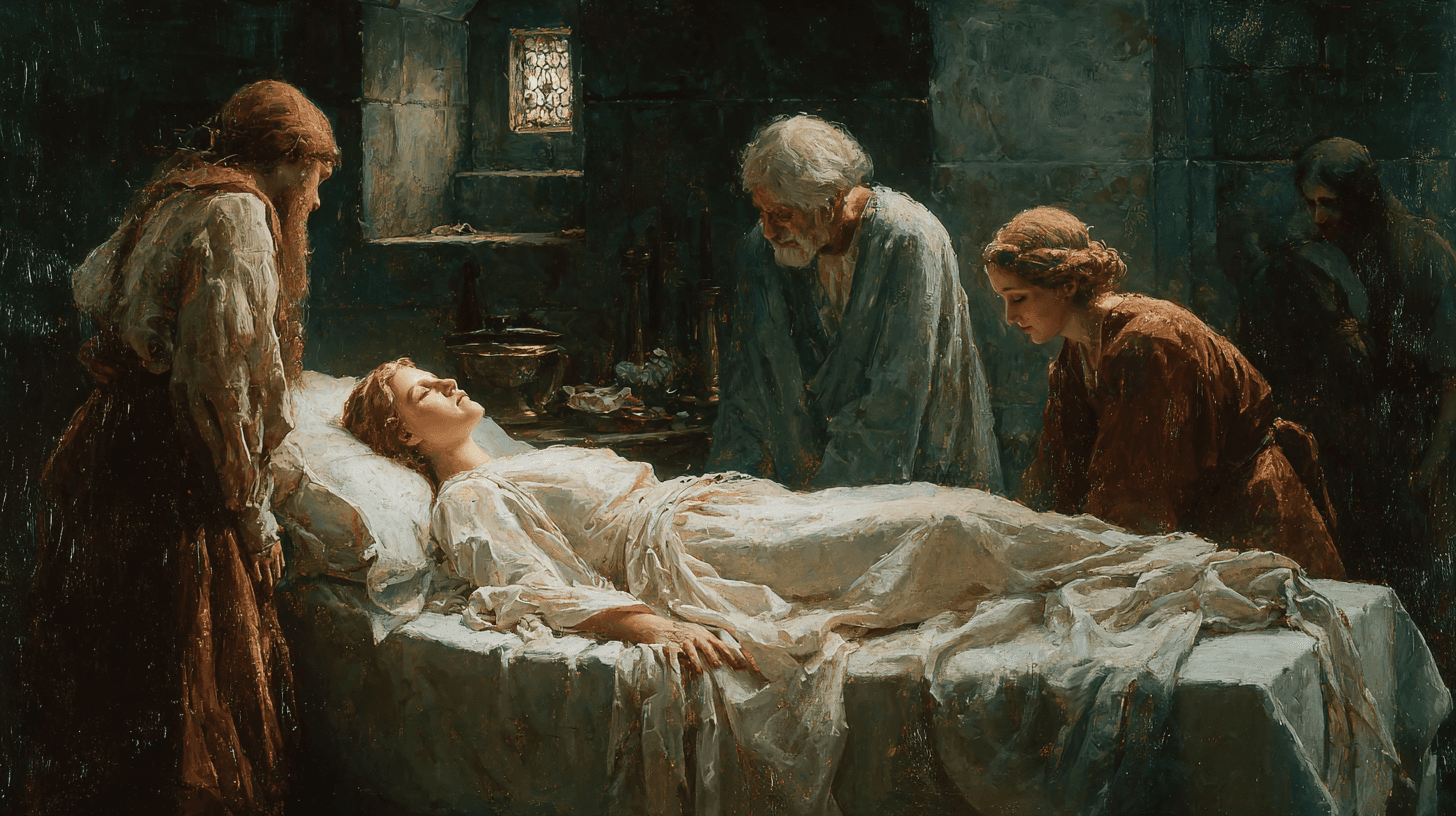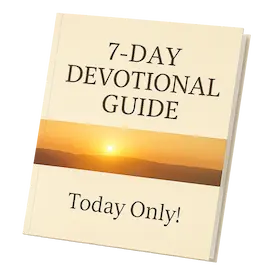How Did Mary Die In The Bible?
Here’s the most important thing to understand up front: nowhere in the Bible do we find a record of Mary’s death. We don’t read about her last days, her burial, or her physical end.
That silence has led many to ask: When did Mary, mother of Jesus, die?
We do know, from John 19:26-27 (NKJV), that at the crucifixion, Jesus entrusted Mary into the care of the beloved disciple John:
“When Jesus therefore saw His mother, and the disciple whom He loved standing by, He said to His mother, ‘Woman, behold your son!’ Then He said to the disciple, ‘Behold your mother!’ And from that hour that disciple took her to his own home.”
This implies Mary likely lived with John after Jesus’ death, which could place her final years either in Jerusalem or Ephesus, two traditional locations associated with her death.
Other than this single instruction left by Jesus, we don't find much else in the New Testament related to her fate after the crucifixion. If we explore the Book of Acts, we'll find her briefly mentioned at Pentecost (Acts 1:14), but she vanishes from the narrative after that.
We must, therefore, look to early Christian history and theology to piece together what may have happened.
The Main Theories: How Did The Virgin Mary Die?
Although the Bible does not give a definitive account of how the Virgin Mary died, Christian tradition across centuries has preserved four primary theories about the end of her earthly life.
These ideas, while differing in emphasis and theology, all attempt to honor the profound role Mary played in salvation history and reflect on her unique closeness to Christ.
1. Mary Died a Natural Death and Was Buried
This is the most straightforward and human understanding: that Mary, like all mortals, grew old and passed away naturally.
Those who accept this viewpoint point to her humanity. While she was the mother of Jesus, she was also a woman who experienced the sorrows and joys of life, including the reality of death.
But where did Mary die? Two major locations compete for the honor of being her final resting place:
- Jerusalem: A well-known site at the foot of the Mount of Olives is venerated by many as the Tomb of the Virgin Mary. Christian pilgrims have visited it since the early centuries, and Eastern Christians especially uphold this location.
- Ephesus: According to some traditions, especially those rooted in the belief that the Apostle John took Mary into his care (John 19:27), she lived out her final years in Ephesus, present-day Turkey. The House of the Virgin Mary remains a popular pilgrimage destination and reflects the idea of a peaceful end under John’s care.
2. Mary Died but Was Assumed into Heaven
This view is officially embraced by the Roman Catholic Church. It was dogmatically defined in 1950 by Pope Pius XII in Munificentissimus Deus, which declared that Mary was taken “body and soul” into heavenly glory. The declaration was deliberately silent on whether she died beforehand, leaving room for both interpretations.
However, most Catholic theologians and early Church Fathers (including St. John Damascene) affirmed that Mary did die, but her body did not undergo corruption. Instead, it was glorified and assumed shortly after her death.
As the Catechism of the Catholic Church explains: “The Immaculate Virgin…was taken up body and soul into heavenly glory, when the course of her earthly life was finished” (CCC 966).
3. Mary Was Assumed Without Dying
Less common but still present, especially in Eastern theological thought, is the theory that Mary never died at all.
Just as Enoch (Genesis 5:24) and Elijah (2 Kings 2:11) were taken into heaven without experiencing death, some early theologians proposed that Mary, because of her sinless nature and immaculate status, may have bypassed death entirely.
This idea aims to exalt her purity and unique role in salvation history, though it remains a minority position and was not embraced in the Catholic dogma.
4. Dormition of Mary (Eastern Orthodox Belief)
The Eastern Orthodox Church teaches the Dormition of the Theotokos (“falling asleep of the Mother of God”).
In this tradition, the death of the Virgin was peaceful and free from suffering. Three days later, according to ancient texts, her body was found missing from the tomb, and the Church teaches she was taken to heaven, body and soul.
This belief closely resembles the Catholic Assumption but places more emphasis on her actual death and the mystical aspects surrounding her “sleep”.
The Dormition is commemorated annually on August 15, the same day Catholics celebrate the Assumption.
Get Closer to God Today
4.9
Average Rating
|Over 5 Million Downloads
What Do We Know from Early Christian Writings?
While the Bible doesn’t offer much information, some apocryphal texts from the second and third centuries try to fill in the blanks. They include:
- Transitus Mariae (The Passing of Mary)
- The Dormition of Mary (attributed to John the Apostle)
These writings are not part of the biblical canon, but provide a little bit of clairty into early Christian beliefs. In Jesus and the Jewish Roots of Mary, Dr. Brant Pitre explores these traditions through the lens of Jewish expectations about the Messiah’s mother. He writes:
“The earliest Christians saw Mary not as just a passive figure, but as the New Eve—immaculately preserved, chosen by God, and destined for glory alongside her Son.” (Pitre, 2018)
According to him, the assumption of Mary is deeply connected to ancient Jewish understandings of holiness and the Ark of the Covenant, which was seen as a prototype of Mary’s body. Just as the Ark was holy and not left to decay, Mary’s body was also preserved.
Understanding Mary’s Context: When Did Joseph Die?
To better understand Mary’s life, especially after losing her Son, it’s worth taking a look at the fate of her husband, Joseph. The Bible does not explicitly describe his death, yet his absence in the later gospel narratives speaks volumes.
Did Joseph die before Jesus? That might be the case: by the time Jesus began His public ministry, Joseph was no longer mentioned. This silence has led many scholars and theologians to infer that he died sometime between Jesus’ adolescence and the beginning of His ministry, perhaps during the so-called “hidden years” of Christ’s life.
While Scripture is sparse, early Christian writings and Church tradition help fill in the gaps.
In Luke 2:41-51, Joseph is present when Jesus, at age twelve, is found teaching in the Temple. But from that point forward, he disappears entirely from the narrative. At the wedding in Cana (John 2:1-12), Joseph is conspicuously absent, though Mary is mentioned.
Furthermore, when Jesus is dying on the cross, He entrusts His mother to the care of the beloved disciple John (John 19:26-27), something He would not have done if Joseph were still alive.
These details strongly support the theory that Joseph died before Jesus’ public life began, and likely much earlier.
How did Joseph die, though? Tradition holds that he died a peaceful and holy death in the presence of both Jesus and Mary, a scene that earned him the title patron of a happy death in Catholic devotion.
Apocryphal sources such as the History of Joseph the Carpenter (circa 4th century AD) describe him as passing away surrounded by angels and blessed by Christ Himself. Though these writings are not canonical, they reflect early Christian reverence for Joseph’s quiet role in salvation history.
Joseph’s death significantly impacted Mary’s life. As a widow, she would have relied more heavily on Jesus during His youth, and later, the bond between her and her Son would be all the more profound.
His passing also reinforces the idea that Mary remained faithful in suffering and silence, enduring grief just as many believers do today.
In a way, Joseph’s death sets the stage for Mary’s enduring presence at the heart of the Gospel story—standing at the foot of the cross, and, later, in the upper room with the apostles (Acts 1:14).
Though largely unseen, Joseph’s final act was to entrust Mary and Jesus into each other’s care, a quiet echo of his lifelong humility and obedience.
 Protestant Views: What Did the Reformers Believe?
Protestant Views: What Did the Reformers Believe?
Protestant denominations generally do not affirm the Assumption of Mary, seeing no scriptural basis for it.
Martin Luther and John Calvin both respected Mary’s role, but rejected the apocryphal stories and post-biblical traditions. Instead, they emphasized that Scripture alone (sola scriptura) should guide doctrine.
For Evangelical Christians, the question ‘how did Mary die?’ is usually answered with: “We don’t know—and it’s not essential for salvation.”
Still, many Evangelicals appreciate studying Mary’s life as part of the larger biblical narrative, even if they don’t embrace traditions outside the Bible. However, questions such as How Old Was Mary When She Had Jesus or how she lived afterward remain of interest even to many Evangelicals.
Get Closer to God Today
4.9
Average Rating
|Over 5 Million Downloads
The Assumption and Catholic Dogma
The Assumption of Mary is dogma and the Church teaches that:
- Mary was preserved from original sin (Immaculate Conception).
- She remained sinless throughout life.
- She was taken up body and soul into heaven.
This belief is rooted in typology and tradition, not explicit Scripture. For example:
- Psalm 132:8 (NRSVCE) – “Rise up, O Lord, and go to your resting place, you and the ark of your might.”
- Revelation 12:1(NRSVCE) – “A woman clothed with the sun” is often interpreted as a symbol of Mary’s heavenly glorification.
When Did Mary Die?
Based on historical estimates and early Christian tradition, Mary likely lived into her 60s or 70s, passing away sometime between 41 and 50 AD, though some extend this to 60 AD.
So, to answer directly:
- When did the Virgin Mary die? Around 41–60 AD (estimated).
- How did Mary, Mother of Jesus, die? Theories range from natural death to bodily assumption.
- Where did the Virgin Mary die? Jerusalem (most likely) or Ephesus (possible).
Did Mary Experience Suffering at Death?
We don’t know for sure, but early writings describe her death (if it happened) as peaceful, calm, and without pain. This is in stark contrast to the suffering of Jesus.
As the Dormition texts say, she “fell asleep in the Lord” and was taken up shortly after.
This mirrors 1 Thessalonians 4:14 (NKJV): “Even so God will bring with Him those who sleep in Jesus.”
Get Closer to God Today
4.9
Average Rating
|Over 5 Million Downloads
Get More Support with Bible Chat
Still curious about who is Jesus’ mother or other faith-based questions?
Bible Chat can help you explore these spiritual mysteries through Scripture and trusted interpretations. Whether you’re looking for biblical references, explanations on doctrine, or help in daily devotions, Bible Chat is your personal guide for everything you’re curious about.
📱 Download the app today from Google Play or the Apple App Store.
Conclusion: What Can We Learn from Mary’s Final Chapter?
Let us review everything we’ve talked about:
- Scripture is Silent: There’s no direct biblical record of Mary’s death.
- Tradition Speaks Loudly: Ancient texts and Church Fathers offer powerful testimonies.
- Catholic and Orthodox Teach Assumption: While details vary, both emphasize her glorification.
- Evangelicals Stay with Scripture Alone: Without biblical proof, the subject is left open-ended.
- The Message of Hope Remains: Mary’s end points to resurrection, not decay.
It’s tempting to dismiss this mystery as theological trivia. But the death of the Virgin Mary holds spiritual meaning. If she died naturally, she shows us the dignity of human death in God’s plan. If she were assumed, she shows us the hope of bodily resurrection for all the faithful.
Either way, Mary points us toward Christ, her Son and our Savior. As it says in Luke 1:48 (NKJV): “For behold, henceforth all generations will call me blessed.”
Her death, or assumption, is not about glorifying Mary above Christ; it’s about glorifying what Christ did in her.
References
- The Holy Bible, New King James Version (NKJV)
- Brant Pitre, Jesus and the Jewish Roots of Mary: Unveiling the Mother of the Messiah. Image, 2018
- John Henry Newman, Mary: The Second Eve, TAN Books, 2015
- Catechism of the Catholic Church, https://www.catholiccrossreference.online/catechism/#!/search/966
- GotQuestions.org: What is the Assumption of Mary?
Image Sources: Midjourney.com











